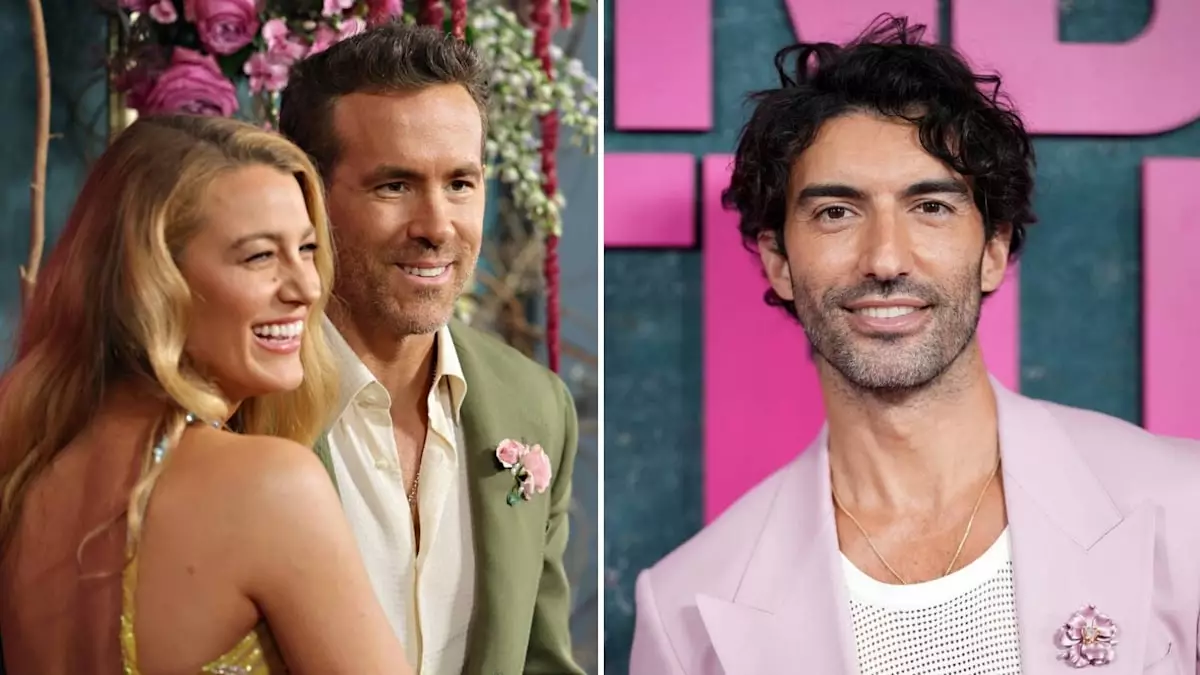The recent legal confrontation between Justin Baldoni and Blake Lively has captivated audiences, revealing the complexities that often lie hidden behind the glitzy façade of Hollywood. As public figures, their actions and words are magnified, leading to intense scrutiny. However, this situation is not merely an entertainment drama; it raises deeper questions about accountability, collaboration, and the ethics of the entertainment industry.
On February 1, 2025, Baldoni’s legal representatives introduced a controversial website titled “Lawsuit Info,” designed to showcase legal documents relevant to his case against Lively, her husband Ryan Reynolds, their public relations team, and even the New York Times. Within this compilation is the “Amended Complaint,” which outlines Baldoni’s grievances rooted in claims of conspiracy. This website reveals how modern technology can be weaponized in legal battles, essentially transforming it from a traditional courtroom conflict into a public spectacle.
The public nature of these documents is striking. They not only contain Baldoni’s detailed account of events but also encapsulate communication exchanges among the parties involved. Such practices raise significant ethical concerns. The release of this information suggests that Baldoni seeks not only legal recourse but also public sympathy and support. In an age where social media can significantly impact public opinion, it is essential to recognize the potential repercussions of disseminating such information broadly.
Baldoni’s legal documents outline a timeline stretching from January 2019, when he first reached out to novelist Colleen Hoover, to the filing of the lawsuit in January 2025. This extensive timeline serves not only as a record of events but also as an indictment of the perceived malfeasance by Lively, Reynolds, and their associates. By framing events in a chronological manner, Baldoni’s team attempts to demonstrate a pattern of behavior that they argue legitimizes their legal claims.
However, the timeline approach also risks oversimplifying the narrative. By focusing solely on key events, it might neglect the nuances of interpersonal relationships and the collaborative nature of filmmaking. The entertainment industry, particularly in high-stakes projects like “It Ends With Us,” requires teamwork, and misunderstandings can easily arise. Highlighting only the discord downplays the collaborative spirit that is often present in creative endeavors.
One of the most eye-catching components of Baldoni’s legal documents is a purported statement crafted by Lively and Reynolds. This statement attempts to position the film’s production as a collective responsibility, encouraging Baldoni to take ownership of the backlash stemming from the film’s marketing. The phrasing of the statement suggests that Lively and Reynolds are attempting damage control, keen to protect their personal images while emphasizing the importance of accountability.
Yet, this notion of accountability raises questions about the intrinsic values of the film industry. In an environment where public perception can dictate financial success, who ultimately bears the responsibility for a project’s outcomes? The insistence on shared responsibility highlights a critical challenge—how do public figures balance their artistic intentions with the often turbulent reception of their work?
The media plays a pivotal role in shaping the narrative surrounding the Baldoni-Lively dispute. Reporting on the “feud” has created a sensationalized story that overshadows the core issues at hand. This phenomenon demonstrates the media’s responsibility to convey nuanced stories, avoiding reductive portrayals of celebrity conflicts. Instead of highlighting personal grievances, a more responsible media approach would provide context to the intricacies of professional partnerships in Hollywood.
As the court date nears, scheduled for March 9, 2026, there is little doubt that the drama will continue to unfold in the public eye. The legal battle between Baldoni and Lively serves as a reminder that even within the framework of creative collaboration, challenges arise that can ripple out beyond the individual parties involved. It prompts us to ponder: how do we, as a society, navigate the complexities of accountability, collaboration, and reputation in a digital age?
The ongoing legal tussle between Justin Baldoni and Blake Lively invites us to critically assess the nature of creativity, responsibility, and the role of public personas. The next chapter in this narrative is bound to draw attention, but it remains to be seen whether the outcome will offer any lessons regarding accountability and the spirit of collaboration in the world of entertainment.

Leave a Reply